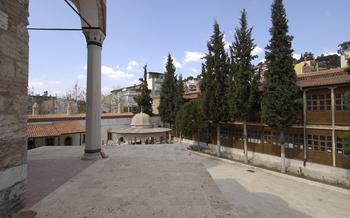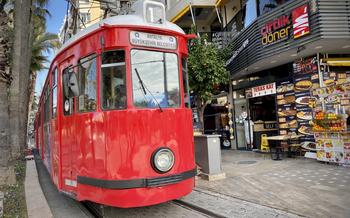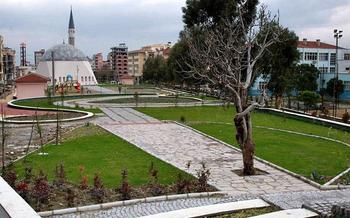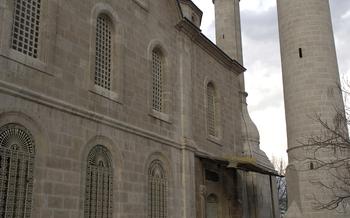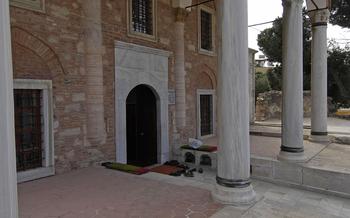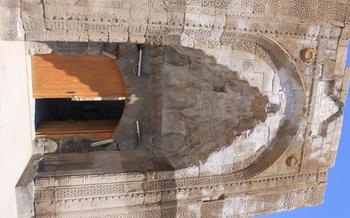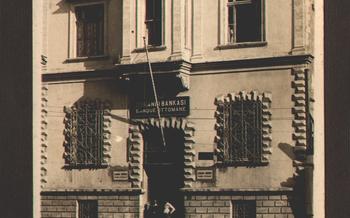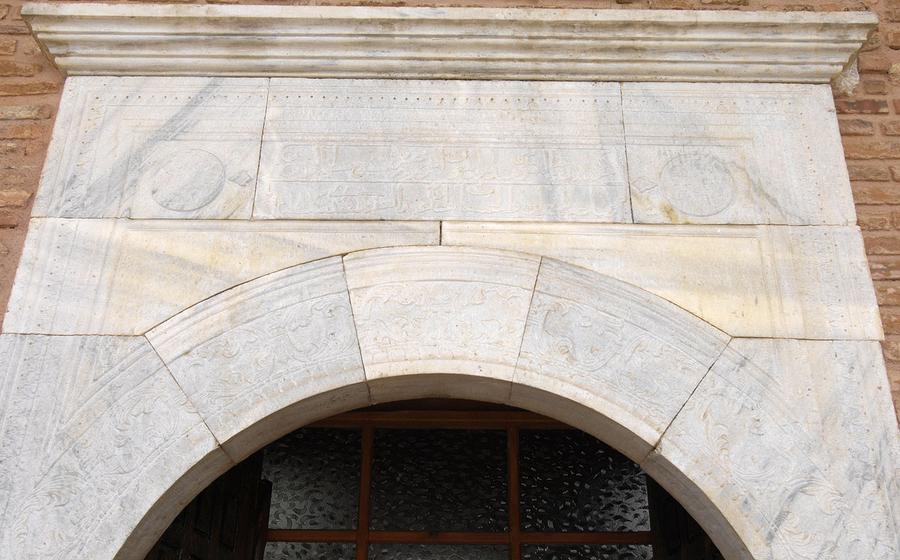
İlyas Bey Mosque Complex in Miletus
- A Journey to Miletus: A Historical Overview
- İlyas Bey Mosque Complex: A Symbol of Anatolian Architecture
- The Grand Mosque: A Place of Worship and Serenity
- The Minaret: A Beacon Guiding the Faithful
- The Madrasah: A Center of Learning and Knowledge
- The Mausoleum: A Tribute to the Departed
- Exploring the Courtyard: A Haven of Tranquility
- The İlyas Bey Mosque Complex Today
- Unveiling the Hidden Gems of Miletus
- Stepping Back in Time: The Miletus Museum
- Savoring the Flavors of Miletus
- Mingle with the Locals: Festivals and Celebrations
- Insider Tip: Capturing the Magic of Miletus
A Journey to Miletus: A Historical Overview
Miletus, an ancient city located in the Aydın province of Turkey, holds a significant place in history as a vibrant cultural and commercial center. Its origins can be traced back to the 16th century BC when it was founded by the Leleges, an ancient Anatolian people. Throughout its existence, Miletus flourished under the rule of various civilizations, including the Greeks, Romans, and Byzantines, leaving behind a rich architectural heritage that reflects the diverse influences that shaped the city.
Miletus's strategic location on the Aegean coast contributed to its prominence as a trading hub. The city's port facilitated maritime trade with far-reaching regions, establishing Miletus as a vital link between East and West. Its bustling marketplace attracted merchants and traders from across the Mediterranean, contributing to the city's economic prosperity and cultural exchange.
Miletus's architectural legacy stands as a testament to its cultural significance. The city's ancient theater, with its well-preserved seating rows, once hosted theatrical performances and civic gatherings. The Temple of Apollo, dedicated to the Greek god of light and music, showcases the grandeur of classical Greek architecture with its imposing columns and intricate carvings. These structures, along with the city walls, fortifications, and other remnants, offer a glimpse into Miletus's rich past and its status as a flourishing metropolis of the ancient world.
Due to its coastal location, Miletus is easily accessible by road, making it a convenient destination for travelers. The city is well-connected to major transportation hubs, including airports and highways, ensuring smooth travel for visitors eager to explore its historical wonders and cultural treasures.
İlyas Bey Mosque Complex: A Symbol of Anatolian Architecture
The İlyas Bey Mosque Complex, nestled in the heart of Miletus, stands as a testament to the region's rich architectural heritage. Built in the 15th century during the reign of the Beylik of Menteşe, the complex showcases a harmonious blend of Seljuk and Ottoman architectural styles, reflecting the cultural and historical influences that have shaped this region.
The mosque, the centerpiece of the complex, boasts an impressive design featuring a spacious prayer hall adorned with intricate tilework and calligraphy. Its graceful dome, supported by elegant pillars, creates a sense of grandeur and serenity, inviting worshippers to immerse themselves in spiritual contemplation. The minaret, a beacon of guidance, rises high into the sky, its slender form adorned with decorative bands that echo the motifs found throughout the complex.
Beyond its religious significance, the İlyas Bey Mosque Complex also served as a vibrant center of learning and knowledge. The madrasah, an integral part of the complex, provided a space for students to pursue religious studies and gain an education in the Islamic sciences. Its classrooms, lined with bookshelves filled with ancient texts, fostered an environment of intellectual exploration and spiritual growth.
The mausoleum, a solemn yet beautiful structure, stands as a tribute to the departed. Its intricate carvings and decorative tiles pay homage to the lives of those who have passed, while also serving as a reminder of the transience of earthly existence. The courtyard, with its serene atmosphere and lush greenery, offers a tranquil space for reflection and contemplation, inviting visitors to connect with their inner selves and seek solace amidst the bustling city.
The Grand Mosque: A Place of Worship and Serenity
The grand mosque, the heart of the İlyas Bey Mosque Complex, captivates visitors with its architectural grandeur and serene atmosphere. Built in the 14th century during the Anatolian Beyliks period, the mosque showcases intricate craftsmanship and opulent design elements. Its spacious prayer hall, adorned with elegant columns and arches, provides a tranquil space for worshippers to connect with the divine. The mihrab, a niche indicating the direction of Mecca, features exquisite tilework and calligraphy, adding a touch of reverence to the sacred space. The mosque's intricate designs and harmonious proportions create an ambiance of peace and spirituality, inviting visitors to pause and immerse themselves in contemplation.
The Minaret: A Beacon Guiding the Faithful
The minaret of the İlyas Bey Mosque Complex stands tall, a symbol of guidance and devotion. Its slender cylindrical form, adorned with intricate carvings and decorative bands, tapers gracefully towards the sky. The minaret serves as a visual landmark, visible from afar, inviting the faithful to prayer and guiding them towards the mosque.
In Islamic architecture, minarets hold immense significance, symbolizing the connection between heaven and earth. The word "minaret" itself is derived from the Arabic term "manara," meaning "lighthouse." Just as a lighthouse guides ships to safety, the minaret guides the faithful on their spiritual journey.
The construction of the minaret demonstrates the advanced architectural techniques employed during the Seljuk era. Built using locally sourced stone, the minaret features a solid base that gradually transitions into a narrower shaft. The use of stone provides durability and stability, ensuring that the minaret can withstand the test of time and the elements.
The minaret is adorned with intricate carvings and decorative elements, showcasing the artistry and craftsmanship of the Seljuk period. Geometric patterns, floral motifs, and calligraphic inscriptions embellish the minaret's surface, adding to its visual appeal and symbolic significance.
The minaret's role extends beyond its practical function as a call to prayer. It serves as a symbol of Islamic architecture, representing the rich cultural heritage of the region. Its presence reminds visitors and locals alike of the enduring legacy of the Seljuk dynasty and the enduring power of faith.
The Madrasah: A Center of Learning and Knowledge
Amidst the serene ambiance of the İlyas Bey Mosque Complex, the madrasah stands as a testament to the region's rich educational heritage. Established during the beylik period, this venerable institution served as a beacon of knowledge, nurturing the minds of aspiring scholars and theologians. Its layout mirrored the traditional architectural style of Anatolian madrasahs, featuring a central courtyard surrounded by classrooms, student dormitories, and a library.
The madrasah played a pivotal role in the educational system of the region, attracting students from far and wide who sought to immerse themselves in the pursuit of Islamic knowledge. Renowned scholars and teachers imparted their wisdom within its walls, covering a wide range of subjects, including Islamic law, theology, philosophy, and literature. The madrasah's library housed a treasure trove of manuscripts and books, providing students with access to a wealth of knowledge and inspiration.
Beyond its educational function, the madrasah also served as a hub for cultural exchange and intellectual discourse. Scholars from different regions and backgrounds congregated here, engaging in lively debates and discussions that enriched the intellectual landscape of the region. The madrasah's contributions to the preservation and dissemination of Islamic knowledge were invaluable, leaving a lasting impact on the intellectual and cultural development of the region.
The Mausoleum: A Tribute to the Departed
Amidst the serene courtyard of the İlyas Bey Mosque Complex, a solemn yet striking structure emerges—the mausoleum. Its architecture exudes an air of reverence, paying homage to the departed souls who rest within its walls. Constructed during the reign of the Beylik of Menteshe, the mausoleum stands as a testament to the enduring legacy of Anatolian craftsmanship.
The mausoleum's design mirrors the architectural style prevalent during the 14th century, characterized by its simplicity and elegance. Its rectangular shape is adorned with intricate stone carvings, adding a touch of ornamentation to the otherwise austere façade. The entrance, marked by a pointed arch, invites visitors into a realm of quiet contemplation.
Inside, the mausoleum reveals a spacious chamber that once housed the mortal remains of notable figures from the Beylik of Menteshe. The walls are lined with niches, each carefully carved to accommodate a sarcophagus. These sarcophagi, though weathered by time, still bear remnants of intricate carvings, hinting at the stories of those who lie beneath.
The mausoleum holds immense cultural and religious significance for the local community. It serves as a reminder of the transience of life and the enduring legacy of those who have passed on. Visitors often come to pay their respects, offering prayers and supplications for the departed souls.
Beyond its religious significance, the mausoleum is also a testament to the region's rich artistic heritage. Its architecture, with its harmonious proportions and delicate carvings, showcases the skill and artistry of the Anatolian craftsmen who built it. The mausoleum stands as a symbol of the enduring power of art and its ability to transcend time and mortality.
Exploring the Courtyard: A Haven of Tranquility
The courtyard of the İlyas Bey Mosque Complex serves as a serene and inviting space, inviting visitors to pause and reflect amidst the architectural grandeur of the complex. Its layout is meticulously designed, featuring a central prayer area surrounded by a covered walkway and lush gardens. The prayer area is adorned with intricate tilework and calligraphy, creating a sacred ambiance that fosters devotion and contemplation. The covered walkway provides shelter from the elements, allowing visitors to stroll peacefully while admiring the surrounding architecture. The gardens, with their vibrant flowers and aromatic plants, add a touch of natural beauty and tranquility to the courtyard.
In Islamic architecture, courtyards hold significant cultural and religious significance. They are often designed as places for gathering, contemplation, and seeking refuge from the bustling world outside. The courtyard of the İlyas Bey Mosque Complex embodies this concept perfectly, offering a sanctuary of peace and tranquility where visitors can find solace and connect with their spiritual selves. Whether seeking a moment of prayer, reflection, or simply enjoying the serenity of the surroundings, the courtyard provides a haven of peace and rejuvenation within the complex.
The İlyas Bey Mosque Complex Today
The İlyas Bey Mosque Complex stands as a testament to the enduring legacy of Anatolian architecture, inviting visitors to step back in time and immerse themselves in its rich history. Today, the complex has undergone extensive restoration efforts, ensuring its preservation for future generations to appreciate. It remains an active place of worship, serving as a spiritual sanctuary for the local Muslim community.
Beyond its religious significance, the complex has transformed into a cultural hub, hosting various events and exhibitions that celebrate the region's heritage. It has become a popular tourist attraction, drawing visitors from around the world who are captivated by its architectural grandeur and historical significance.
Recognizing its cultural and historical value, local initiatives are actively involved in safeguarding and promoting the complex. These initiatives focus on preserving its architectural integrity, organizing guided tours and educational programs, and raising awareness about its importance.
The İlyas Bey Mosque Complex stands as a symbol of cultural harmony and interfaith dialogue. It serves as a platform for promoting understanding and fostering peaceful coexistence among people of different faiths. The complex invites visitors to explore its sacred spaces, admire its architectural beauty, and gain a deeper appreciation for the rich tapestry of Anatolian culture.
Unveiling the Hidden Gems of Miletus
Beyond the İlyas Bey Mosque Complex, Miletus boasts a treasure trove of other remarkable landmarks and historical sites that transport visitors back in time. Explore the ancient theater, an impressive relic of the city's past, where plays, concerts, and other performances once captivated audiences. Its well-preserved seating tiers offer a glimpse into the social and cultural life of ancient Miletians.
Discover the imposing city walls, remnants of Miletus's defensive fortifications. These sturdy stone structures once protected the city from invaders and served as a symbol of its strength and resilience. As you walk along the walls, imagine the bustling streets and vibrant markets that existed within their protective embrace.
Delve into the Temple of Apollo, a sacred sanctuary dedicated to the Greek god of music and prophecy. Although only ruins remain, the temple's grand scale and intricate carvings hint at its former splendor. It was a place where ancient Miletians sought divine guidance and paid homage to their deities.
Stepping Back in Time: The Miletus Museum
Nestled in the heart of Miletus, the Miletus Museum is a treasure trove of ancient artifacts and historical wonders that transport visitors back in time. As you step through its doors, you will embark on a journey through the rich past of this remarkable city.
The museum houses an impressive collection of sculptures, ceramics, inscriptions, and other relics that provide a glimpse into the daily lives, beliefs, and traditions of the ancient Miletians. Exquisitely carved statues, intricate pottery, and well-preserved inscriptions tell the story of a civilization that thrived for centuries.
One of the highlights of the museum is the collection of marble sculptures, which showcase the exceptional artistry and craftsmanship of the Miletians. From delicate female figures to imposing male torsos, these sculptures offer a glimpse into the aesthetic sensibilities and religious practices of the ancient city.
Another must-see exhibit is the collection of ceramics, which includes a wide variety of pottery, from utilitarian household items to elaborately decorated vases. These artifacts provide insights into the daily lives of the Miletians, their culinary practices, and their trade relations with other regions.
The museum also houses a remarkable collection of inscriptions, including stelae, decrees, and honorary inscriptions. These inscriptions provide valuable historical information, shedding light on the political, social, and economic aspects of ancient Miletus.
With its rich collection of artifacts and insightful exhibits, the Miletus Museum is a must-visit for anyone interested in the history and culture of this ancient city. As you explore the museum's galleries, you will gain a deeper understanding of the vibrant civilization that once flourished on the shores of the Aegean Sea.
Savoring the Flavors of Miletus
Miletus offers a culinary journey that tantalizes the taste buds and unveils the region's rich agricultural heritage. Embark on a gastronomic adventure by exploring local markets brimming with fresh produce, where the vibrant colors and aromas of seasonal fruits and vegetables create a feast for the senses. Indulge in succulent olives, juicy tomatoes, sweet melons, and crisp cucumbers, savoring the flavors that have been cultivated in this fertile land for centuries.
Venture into the heart of the city to discover hidden culinary gems. Unassuming eateries and family-run restaurants line the charming streets, inviting you to relish authentic Turkish cuisine. Begin your culinary exploration with a hearty breakfast of "menemen," a traditional dish of scrambled eggs with tomatoes, peppers, and onions, accompanied by freshly baked bread.
For a taste of the sea, head to the bustling fish market, where the catch of the day is displayed in abundance. Choose from an array of glistening fish, such as sea bass, sea bream, or red mullet, and have them grilled to perfection. Pair your seafood feast with a refreshing salad of crisp greens, tangy tomatoes, and briny olives, dressed with a drizzle of fragrant olive oil.
As the sun begins to set, immerse yourself in the vibrant atmosphere of Miletus's evening food scene. Street vendors tempt passersby with mouthwatering aromas of grilled kebabs, crispy gözleme (savory pancakes filled with cheese, meat, or vegetables), and sweet börek (flaky pastries filled with various fillings).
Conclude your culinary adventure with a visit to a traditional Turkish coffeehouse. Sip on a frothy cup of Turkish coffee, accompanied by a sweet treat such as flaky baklava or delicate Turkish delight. As you savor the flavors, engage in conversations with the locals and learn about their culinary traditions, creating a lasting connection with the heart of Miletus.
Mingle with the Locals: Festivals and Celebrations
Miletus comes alive during its vibrant festivals and celebrations, offering a unique opportunity to immerse yourself in the local culture. Attend the annual Miletus Culture and Arts Festival to witness a captivating display of traditional music, dance, and performances. These events showcase the rich heritage of the region and provide a platform for local artists to showcase their talents.
Engage with the friendly locals, eager to share their customs and way of life. Strike up conversations at the local markets, where you can barter for fresh produce and handmade crafts. Visit the bustling teahouses to savor a cup of aromatic Turkish tea and engage in lively discussions with the locals. By immersing yourself in the local community, you'll gain a deeper understanding of the Turkish people and their warm hospitality.
Attending festivals and interacting with the locals is an enriching experience that allows you to connect with the heart and soul of Miletus. Embrace the opportunity to celebrate life, share stories, and create lasting memories in this captivating corner of Turkey.
Insider Tip: Capturing the Magic of Miletus
As you embark on your journey to document the beauty of the İlyas Bey Mosque Complex and its surroundings, keep these insider tips in mind to capture truly remarkable photographs:
-
Embrace the Golden Hour: Plan your visit during the golden hours of sunrise or sunset to take advantage of the warm, diffused light that casts a magical glow upon the complex. This natural lighting enhances the intricate details and textures of the architecture, creating a visually captivating scene.
-
Explore Different Perspectives: Don't limit yourself to standard shots. Experiment with various angles and viewpoints to reveal the complex's grandeur and its harmonious relationship with the surrounding landscape. Capture wide-angle shots to encompass the entire structure or zoom in on specific architectural elements for a more intimate perspective.
-
Utilize Leading Lines: Incorporate leading lines, such as the pathways, arches, or columns within the complex, to draw the viewer's eye towards the focal point of your image. These lines create a sense of depth and guide the viewer's attention, enhancing the overall composition.
-
Play with Reflections: If you're fortunate enough to visit during or after rainfall, take advantage of the reflective surfaces created by puddles or water features. These reflections add a unique dimension to your photographs, creating an ethereal and captivating effect.
-
Capture the Essence: While capturing the architectural beauty of the complex is essential, don't forget to convey its essence and atmosphere. Photograph people interacting with the space, whether they are praying, studying, or simply seeking solace within the complex. These candid moments add a human element and bring the history of the place to life.
